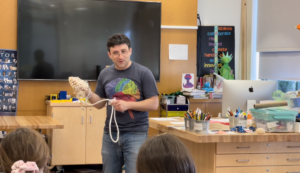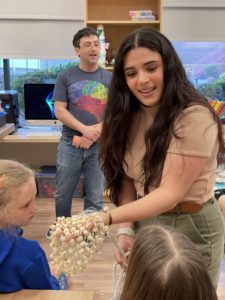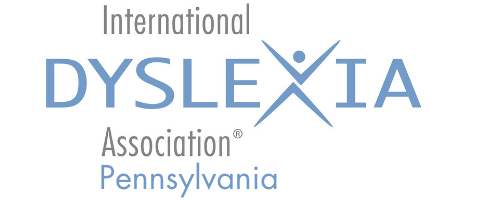
By Dr. Grace Ashton, Nancy Blair, and Pat Roberts
In 2018, neuroscience researchers at Haskins Laboratories launched the Haskins Global Literacy Hub, an international and interdisciplinary initiative focused on improving language and literacy outcomes globally for children at risk for reading difficulties. The group chose AIM Academy as its first education partner.
“We are committed to the respectful partnership between education and research and what we learn from each other,” said Haskins Laboratories Director Dr. Ken Pugh, describing the AIM partnership. “To do this amazing initiative with them, to be able to bring the research lab into the school, to work together in a way where we are learning from each other very directly what are the programs, what’s working, how are kids responding, and then we can marry the research tools into the real world, if you will, of classroom treatment, it’s a very exciting prospect.”
This unique partnership has so far included the installation of an in-school EEG lab on AIM’s campus; programs for teachers and parents that provided access to evidence-based resources during the height of the pandemic; and a national summit bringing state departments of education and researchers together.
In-School Neuroscience
Historically, educational neuroscience research on reading is conducted in the lab using large equipment such as magnetic resonance imaging (MRI). Despite notable advances in the understanding of the neural basis of reading and of treatment response, there are gaps between brain imaging findings and practice. In hopes of answering educators’ questions about how best to use research to support students, Haskins Global Literacy Hub launched its first in-school partnership with AIM students in AIM’s new EEG lab in 2019. An electroencephalogram (EEG) is used to measure electrical activity in your brain using small electrodes attached to your scalp. It can measure brain activity while students complete school tasks like reading, helping researchers understand what goes on in the brain during these tasks.
The ongoing Predicting Learning Outcomes study, which is also being conducted at The Windward School, seeks to find missing links between research and classroom application and to answer the following kinds of questions: What about the students who fail to respond to the reading intervention that helps so many? Educators question why some students, who appear so similar at the beginning of the school year, improve at such different rates despite receiving the same intervention. What advice can researchers give to practitioners about treatment resisters? What about students who possess weaknesses in some areas but strengths in others? Shall we focus on their weaknesses or somehow co-opt their strengths in their instructional planning?
Despite having to pause in-person EEG testing during the height of the pandemic, Haskins researchers continue to gather data with AIM student volunteers undergoing treatment for poor reading. This study uses EEG to identify neural signatures of treatment response in children with language-based learning difficulties.
By using this relatively accessible technology at frequent intervals as children progress through treatment, Haskins hopes to identify early indicators of which children will respond to standard evidence-based treatment and which children are more likely to have persistent problems. Further, they hope to identify why some of these children may take more time to make adequate gains. Although research from their labs and others identifies some promising correlates of persistent reading difficulty (e.g., processing speed, executive function), they have yet to identify causal relations between neurocognitive function and treatment response at the level of individual students. By identifying these causal factors and collaborating with those developing state of the art interventions (including ed-tech), Haskins hopes to move away from a framework of resisters and responders and toward a model of “what works for whom and why.”
children are more likely to have persistent problems. Further, they hope to identify why some of these children may take more time to make adequate gains. Although research from their labs and others identifies some promising correlates of persistent reading difficulty (e.g., processing speed, executive function), they have yet to identify causal relations between neurocognitive function and treatment response at the level of individual students. By identifying these causal factors and collaborating with those developing state of the art interventions (including ed-tech), Haskins hopes to move away from a framework of resisters and responders and toward a model of “what works for whom and why.”
A key component of this partnership is a commitment to bidirectional training of students, teachers, clinicians, and practitioners to involve school staff in every step of the research, and likewise, researchers at all levels are integrating into the schools. This unique in-school model connecting researchers with practitioners was the focus of a paper in the IDA’s Examiner in October, 2019, and was addressed in the most recent issue of The Journal of Research in Reading.
Recently, Haskins research scientist Dr. Dan Kleinman and Haskins research associate Nikole Parilla visited AIM and met with 1st-5th grade students to talk about the brain and to introduce students to the EEG lab as AIM continues its in-person data collection in both Spring and Fall 2022.
Furthering the Reach of Research to Practice
As partners in the Haskins Global Literacy Hub seek to deliver on the promise of neuroscience-guided reading instruction and remediation and train a new generation of educators to work with these new approaches, AIM has leveraged its partnership with educators and researchers to foster and benefit from collective impact.
As AIM began working with representatives from state departments of education to determine common goals and develop ongoing collaborations, it discovered that most State Departments of Education have common reading goals but work in silos. To bridge research, policy, and evidence-based practice, AIM and the Haskins Global Literacy Hub held a summit on July 22, 2021, with the initial goal of learning more about the work being conducted by individual states to advance research-based practices despite having limited resources. The Summit featured presentations from researchers and stories from State Departments of Education, Offices of Early Childhood Education, and Offices of Special Education on how they are “moving the needle” through the advancement of the Science of Reading and its implementation in their states.
Following the initial summit, four working groups were formed to focus on the topics of foundational literacy skills, struggling readers in middle school and high school, multilingual learners, and students with learning disabilities. They met four times to develop relationships with researchers across states. Bringing together literacy researchers, experts, and state departments assisted AIM Institute in developing four important outcomes to emphasize our collective impact on reading instruction at the national level. State departments reported that gaps often occur between research and policy, impacting evidence-based literacy instruction. The mission of the collaboration project was to discover those gaps and work toward collectively impacting all students by increasing state department efficacy.
With over half of all State Departments of Education participating in the Working Group sessions, authentic storytelling allowed groups to expound upon current mandates, legislation, and initiatives to create unique work products from each subgroup. Using case studies, resource creation, and pilot programs, state departments now have more robust tools to influence reading outcomes for students. The goal of the working groups was to create the backbone of support needed by state departments of education in continuing and strengthening impact and outcomes collectively. The summit and working groups were instrumental in creating collaborative partnerships that will help shape the future work of states across our nation.
AIM continues to work with partners involved in the hub to consider and develop future research opportunities to further literacy learning for all.
Here are some links to additional information.
AIM Institute for Learning & Research
IDA’s Examiner in October 2019
Journal of Research in Reading, April 2022
About the Authors: Nancy Blair and Pat Roberts are Co-Founders of AIM. Dr. Grace Ashton is AIM’s Associate Head of School and incoming Director of Research for AIM Institute.

